- Home
- Julie Smith
Dead In The Water (Rebecca Schwartz Mystery #4) (The Rebecca Schwartz Series) Page 2
Dead In The Water (Rebecca Schwartz Mystery #4) (The Rebecca Schwartz Series) Read online
Page 2
As we’d arranged, I phoned Marty when I got into town. She was working late, which seemed odd for a Friday, but she said she was catching up after her two days in San Francisco. She said she’d meet me in the parking lot, where we could leave my car while we had dinner at some splendid fish place. (People who love aquatic animals love them in every way.)
She had me park in the dirt lot on what is still Ocean View Boulevard, but becomes Cannery Row at the Monterey line—weirdly, the aquarium is on the border of Pacific Grove and Monterey. When I got out of the car, she gave me a big hug as if we were best friends instead of fairly distant acquaintances, and I started getting into the holiday aspect of the thing. She led me through the gate to the closer, paved parking lot, both of us chattering as if we hadn’t seen each other in months instead of hours.
She seemed much cheerier than she’d been in the city. That was the way these things went, I remembered from my last breakup. You were morbidly depressed for a while, and then you started having some good days, and eventually most days were pretty good. Don had been gone three months.
“Are the kids coming to dinner with us?” I asked.
“Oh, heavens no. They’re in front of the tube and can’t be pried away. Keil’s twelve, you know, and very responsible. Damn good businessman, too—takes after his mom. He has his own errand-running business, called Trap Door, Ltd. It’s not really a limited partnership, of course.” She sounded like the Stanford M.B.A. she was. “The ‘limited’ part refers to the way he feels, not having a driver’s license—has to work on a bike, poor baby.”
“What does the Trap Door part mean?”
“You don’t get it?”
“Not offhand.”
“He’s got a wild imagination, I guess.” She sighed, as if this were not a good thing. “If you get in a bind, and can’t get your chores done, you can escape via Trap Door.”
“Ah. Pretty clever.”
“He also baby-sits, which is what he’s doing tonight. Of course, he charges more for it than any kid in the neighborhood, but he’s worth it—the first time he sits, he reels off the phone numbers of the police and fire departments, demonstrates the Heimlich maneuver, and assures you he knows CPR in case your kid—in this case, your other kid—has a heart attack. The boy loves his money. Anyway, not everyone wants to babysit Libby. Especially since Don left.”
“Why not?”
“She’s—ah—difficult.”
Terrific. I’d just signed up to spend the weekend with the Bad Seed.
“Rebecca, I’ve got a surprise for you before we eat. Have you ever seen a kelp forest at night?”
“We’re going to look at the aquarium? I thought we were getting your car.”
Marty smiled enigmatically. She wasn’t the sort you usually think of as having a flair for drama. She was short, with dirty-blond hair, brown eyes, and light skin with a dusting of freckles. Her hair was naturally wavy, and though she obviously had it cut professionally, she’d opted for neatness rather than style—if asked how she wore it, I would have had to say “on her head.” Nothing else really came to mind.
Her features were neat and ordinary as well, and so was her businesswoman’s gym-trained figure. The only remarkable thing about Marty seemed to be her love of the ocean. Unless she had her own hidden depths.
“Is this legal? To go in at night?” I said, hoping it wasn’t.
“Oh, perfectly. It’s a great place for night parties. In fact, arranging them is one of the things we do in marketing. There isn’t one tonight, though.” She dropped her voice to a whisper. “It’ll be quiet as the grave.”
“That should suit our mood.”
“Oh, cheer up—that’s the point of all this.” She snapped her fingers. “I know what you’ll like. Let’s go see the mola first. It’s in quarantine.”
She turned left, toward an outside shedlike affair. “This is aquarist territory.”
“And aquarists are?”
“The husbandry people. They’re all marine biologists, they’re all divers, and I think all of them at least have their master’s. Very, very well qualified. And they live the sea. When they’re not diving they’re sailing, and when they’re not sailing, they’re eating sushi. Look, there are the ‘thermal recovery units.’”
“The what?”
She laughed. “Hot tubs. But they really do need them. It’s sixty degrees in the bay. You can get hypothermia so fast it’s scary.”
The mola, lying on the surface of its tank, had lost its bewildered look, but it was as Frisbee-like as ever. Also known as the ocean sunfish, it must be named for its shape, but the nickname seems far too bright and cheerful for so grotesque a creature. As a matter of fact, I bow to no one in my fanship of molas; they’re utterly fascinating beasts. But the phrase “monster of the deep” does rather come to mind at first sight of one. The mola has the misfortune to look like half a fish. It’s not completely flat, but close enough. It looks something like a frying pan with arms.
“Marty, that thing’s weird.”
“I knew you’d love it. They’re warm-water fish—that’s why we can’t keep them in the tanks. Relatives of the puffer; you probably know that.”
“You mean the dread fugu?”
“Uh-huh. We have a couple of those, too—upstairs in our Sea of Cortez exhibit. Want to see?”
“No, thanks. They give me the creeps.”
When I had admired the evolutionary accident to her satisfaction, Marty took me into the building itself, through a back entrance that seemingly opened into a labyrinth—and we still weren’t even in the aquarium.
“This is the old Hovden warehouse; you know that, right? Its office space connects with the aquarium proper—I’m on the third floor. Here are the aquarists’ offices, and our library, and the volunteer office. We have about five hundred fifty volunteers, can you believe it? Here’s the volunteer and staff lounge, there’s an exhibits area, and here’s a little back room where they do graphics.”
She gave me a proprietary smile. “A lot of people work here. It takes a staff of two hundred seventy full-and part-time people to run this place, in addition to the volunteers. Oh, and another fifty in the restaurant.”
I had a sudden flash of envy—she was so much at home here. “I wish I’d been a marine biologist,” I said. “Instead of a lawyer.”
Marty laughed, secure in her own place, husband-stealing boss or no, and opened a door to the aquarium-behind-the-scenes, a place of wet floors and another kind of labyrinth. “The exhibit area is in the heart of the place, but it’s surrounded by all this.” She gestured. “Actually, there’s almost as much of this space as there is exhibit area. Come on—I’ll show you where the aquarists work, and how they go into the tanks.”
I followed silently.
“They took a lot of care with this building,” she said, “in just about every way you can think of. Because it’s on the site of the old Hovden Cannery, it’s built to resemble the Hovden as much as possible.” She pointed, continuing the tour. “There’s the freight elevator—it goes up to the roof. And here—” she opened a door “—is what we call a service area. This is where the aquarists work.” There were more wet, slippery floors here, and pipes and things you could hit your head on. Fiberglass platforms surrounded the tanks, which were ordinary white vessels on three sides, but windowed on the fourth. Inside were small exhibits. From where we were, you could look down into the tank, and feed the fish if you were an aquarist. The view was ordinary. But from the window out front, it was a stunning vista.
For the first time, I started to understand the showmanship that had gone into the design of the place.
Some of it, indeed, was done with mirrors. Marty pointed one out. “See that? With the cloud of blue rockfish? From the front, it looks like a sand channel, opening back to more and more blue rockfish.
“And these are called ‘inserts,’” she said, noting the lining of one of the tanks. “They’re slabs of fake rock that have been in the
bay a while, growing things. Oh, look at this.” She plucked a tiny starfish from behind the insert and put him back on exhibit.
I was staring at pale pink anemones, thinking of the vicious ‘clone wars’ these pretty things fight, when Marty shrieked, “Would you look at the size of this melibe!”
Behind me, I stared into a tank that wasn’t on exhibit. The melibe—or sea slug—was something like a giant, nearly transparent Venus’s-fly-trap, and looked like a parachute. It was about two feet long, which must be long for a melibe.
“These things smell great,” she said. “Like melon, although I don’t know if that’s where the name comes from. We’ll get an aquarist to take one out for you one day—they look like a little pile of Jell-O when you put them on your palm.”
I was impatient. “Let’s go see the kelp tank.”
We stepped into the exhibit area.
* * *
The Monterey Bay Aquarium is very different indeed from other aquariums, which are basically collections of fish from around the world, especially the tropics. This one shows you what you’d see if you were a hermit crab living in the bay, which itself is not just any bay. As anyone knows who’s read Cannery Row, it teems with darting, swirling, multicolored, many-shaped life. Even when you know that, it’s quite a bit more than you could possibly imagine it is, standing on the shore and looking out. Underneath it, stretching sixty miles out to sea, and two miles down at its seaward end, is Monterey Canyon, as large and deep as the Grand Canyon.
So that’s the bay. Its many habitats, from the deep reefs to the wharf, are recreated within the aquarium, in panoramic vistas that make your breath catch—far, far, from the old-fashioned window-in-the-wall approach. The most famous of the exhibits is the towering kelp forest, three stories high, sixty-six feet long, containing 335,000 gallons of water, its seven-inch-think acrylic walls made in Japan by a secret process and assembled on Cannery Row by experts who forbade aquarium officials to watch. It is the tallest aquarium exhibit in the world, and arguably the most spectacular.
“Damn!”
“What is it?”
“The lights are off.”
The kelp forest was dark.
“The lights are on the roof. They usually have them on for night parties,” said Marty. “I forgot they might be off. Tell you what we’ll do—we’ll call the control room and get them turned on. The surge machine, too.”
We walked down the stairs to the first floor, where there’s a little gallery in front of the kelp forest. Here the floor is carpeted, and there are a few stair-step benches where you can sit in case you become mesmerized and unable to move.
Marty left me and went to the information desk to use the phone. In a moment, the lights lit the tank, as if the house lights had gone up on a stage. A big gold garibaldi darted away, startled. A sea cucumber, spiny and, to tell you the truth, somewhat revolting, had pasted itself to the far wall. Leopard sharks glided by, and thin, black-tailed senoritas. A rockfish, looking baleful, flapped its pectoral fins like wings. I was staring back at it, wondering if it was trying to make friends (and knowing better), when the surge machine went on.
The kelp, twenty-eight feet tall, as impressive in its own way as a stand of redwoods, began to sway. Water swirled as if a wave had hit, which is what the surge simulates, and an object caught in the forest worked its way loose. It looked like a gray jacket, windbreaker-style, with a red splatter on it. Another foreign object floated gracefully toward the bottom—a woman’s high heel. Automatically, I looked up.
The body of a woman floated on top of the kelp canopy. She was wearing a black business suit, which looked as if it was made of linen. I stared, transfixed, at a leopard shark shaking its body, its teeth caught in the woman’s pantyhose. Silver sardines swam under the body. Suddenly something yellow darted into the water, and one of the sardines flowed red.
The body changed position and surged downward for a moment so that I could see its face, black hair wreathing it eerily, like Medusa’s. Something nasty was sticking out of the woman’s eye; it looked like the ivory handle of a fancy knife.
Again, fast as a cat’s paw, a pair of yellow pincers, now at the woman’s neck, plunged toward a fish, this time missing. And another, at the waist. They were beaks.
I realized, knees starting to shake, that there were gulls standing on top of the body, fishing.
CHAPTER THREE
“Marty!”
But she’d already seen it. She was making little noises like someone having a dream, trying to wake up. Her body was shaking. I took her shoulders and spoke softly. “It’s okay, Marty. You’re okay, we’ll call security. Here—I’ll help you sit down.”
I pushed gently on her shoulders, trying to get her to sit on one of the benches, but she resisted. “It’s Sadie,” she whispered.
“Sadie Swedlow,” I said, to show I understood.
She nodded.
“Okay. It’s not you—it’s not me. It’s Sadie Swedlow.”
“Rebecca!” Her teeth were chattering. “Look at that thing! That thing in her eye—”
“Yes. Someone stabbed her. It’s okay. You’re okay.”
“Look at it!”
“Marty. We’ve got to call security.” I spoke brusquely. I was through being soothing; it wasn’t working anyway. She rallied enough to give me the number.
When I got back from the information desk, Marty had finally sat down, but she was still shivering. I took off my linen blazer and tried to tuck it around her. “My jacket,” she said.
“Yes. You can have it for now.”
She raised her hands, maybe meaning to point, but not succeeding. Her hands fluttered and circled helplessly. And then she pulled herself up from the bottom of her spine, took a deep breath, and spoke coherently. “That’s my jacket in there.”
“The gray one? Floating?”
Two guards came. One helped me to get Marty to lie down with her feet elevated, and the other called the police. The young officer who arrived first looked twenty-five and reacted about like Marty. But a few minutes later, the place was crowded—and not only with Monterey’s finest. The night staff crawled out of the woodwork—cleaning workers, late-working aquarists, another guard, and some people in business clothes, maybe from accounting or education. Firemen and paramedics arrived.
“Rebecca …” She was whispering again.
“Yes?”
'“Did you see that thing in her eye?”
I nodded, wondering what else I could do to calm her—so far as I could see, no one had a pocket flask.
“I mean, did you get a really good look at it?”
“No. I looked away. I guess you did, too.”
“I think it’s my letter opener.”
My mind went into gear, finally. Her jacket. And now her letter opener. And Sadie had just made off with her husband. I talked fast.
“Marty, I’m your lawyer. For right now, anyway. You can call someone else when they give you a chance, but—”
“No. I want you.”
“Okay. Now, listen. Don’t say a word to the police. Nothing. Except that I’m your lawyer and I’ve advised you not to talk. Not a word. Understand?”
She nodded, looking dazed, and I went to make a phone call I wished I’d already made.
I returned to Marty and knelt, about to reiterate the importance of clamming up. “Excuse me,” said someone behind us. “I’m Paula Jacobson from the police department. This is Lloyd Tillman, Detective Lloyd Tillman, I should say. We understand you’re the two who called security.”
I stood up. “Rebecca Schwartz.”
Slowly, Marty got up as well. “Marty Whitehead. Is she dead, Officer?”
Jacobson smiled. “It’s ‘Sergeant,’ technically. But why don’t you call me Paula? Maybe we could talk a few minutes while Detective Tillman and Ms. Schwartz—”
I broke the news. “I’m Ms. Whitehead’s attorney and I’ve advised her not to talk to you. Could we have a few minutes alone, please?”
Jacobson raised an inquisitive eyebrow. She was tall and striking, someone who wanted to be noticed. But right now she was dressed carelessly in jeans, T-shirt, and white cotton blazer, as if she’d been home doing dishes when she got the call and had rushed out, grabbing the jacket on the fly.
“All right.” But there was an angry edge to her voice. She was probably in her early thirties. She had longish white-blond hair, split on the ends, black roots showing, olive skin, a long face, and eyebrows plucked to a thin line. A sad look in her dark eyes went with the longish face. Her thighs were mighty; I hadn’t seen it yet, but I was willing to bet her backside matched. A strapping female, and I didn’t trust that sad look she had. Depressed people can turn aggressive.
Tillman didn’t look much like Mr. Nice Guy himself. He was beefy, even a little porky, a few years older than Jacobson, and he had one of those short, neat beards with no mustache. He hadn’t said a word yet, but his scowl said not to mess with him. I wished we had a choice.
“Is she dead?” Marty asked again.
“Who, Marty?” asked Tillman.
“The woman in the tank.”
He shrugged. “Who is she?”
“We were wondering that, too,” I said quickly, hearing an “S” hiss out of Marty.
“You have no idea?”
Marty held her tongue. Good.
Jacobson smiled. “We don’t know if she’s dead. They haven’t got her out of the tank yet.”
Marty said, “I see.” She was making a nice recovery.
I led Marty away and sat her on one of the benches. We had to whisper, but too bad—there were some things I had to cover. Fast. “Marty, what’s going on here?”
“I didn’t kill her.”
“What else do I need to know?”
She shrugged. “I don’t know what you mean.”
“There’s a good chance you could be arrested tonight.” Finally, as the light dawned, she began to look alarmed. “Me? For what?”

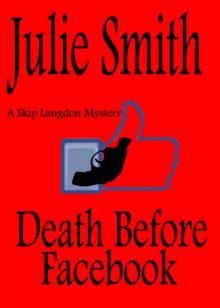 Death Before Facebook (Skip Langdon #4) (Skip Langdon Mystery) (The Skip Langdon Series)
Death Before Facebook (Skip Langdon #4) (Skip Langdon Mystery) (The Skip Langdon Series) P.I. On A Hot Tin Roof
P.I. On A Hot Tin Roof Death Turns A Trick (Rebecca Schwartz #1) (A Rebecca Schwartz Mystery) (The Rebecca Schwartz Series)
Death Turns A Trick (Rebecca Schwartz #1) (A Rebecca Schwartz Mystery) (The Rebecca Schwartz Series) The Axeman's Jazz (Skip Langdon Mystery Series #2) (The Skip Langdon Series)
The Axeman's Jazz (Skip Langdon Mystery Series #2) (The Skip Langdon Series) The Kindness of Strangers (Skip Langdon Mystery #6) (The Skip Langdon Series)
The Kindness of Strangers (Skip Langdon Mystery #6) (The Skip Langdon Series) Louisiana Hotshot
Louisiana Hotshot House of Blues
House of Blues Jazz Funeral (Skip Langdon #3) (Skip Langdon Mystery) (The Skip Langdon Series)
Jazz Funeral (Skip Langdon #3) (Skip Langdon Mystery) (The Skip Langdon Series) Tourist Trap (Rebecca Schwartz #3) (A Rebecca Schwartz Mystery) (The Rebecca Schwartz Series)
Tourist Trap (Rebecca Schwartz #3) (A Rebecca Schwartz Mystery) (The Rebecca Schwartz Series) Louisiana Bigshot
Louisiana Bigshot Huckleberry Fiend
Huckleberry Fiend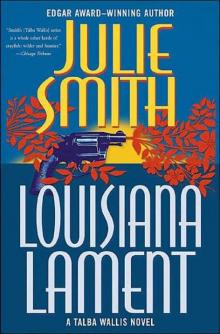 Louisiana Lament
Louisiana Lament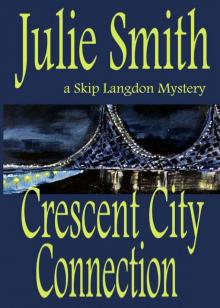 Crescent City Connection (Skip Langdon Mystery #7) (The Skip Langdon Series)
Crescent City Connection (Skip Langdon Mystery #7) (The Skip Langdon Series)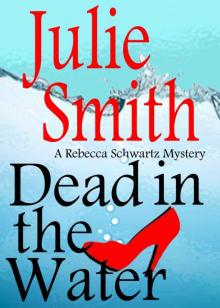 Dead In The Water (Rebecca Schwartz Mystery #4) (The Rebecca Schwartz Series)
Dead In The Water (Rebecca Schwartz Mystery #4) (The Rebecca Schwartz Series) True-Life Adventure
True-Life Adventure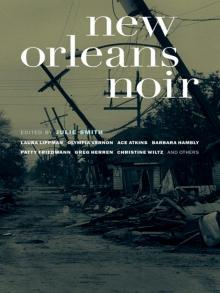 New Orleans Noir
New Orleans Noir